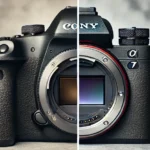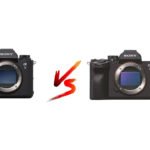Mastering Wedding Photography Gear Maintenance for Unparalleled Reliability
In the world of wedding photography
Capturing those precious moments demands more than just skill behind the lens. A reliable set of photography gear is a crucial component for success. Imagine the heartache of missing a perfect shot due to a malfunctioning camera or lens. To ensure that your gear is always ready to deliver exceptional results, mastering wedding photography gear maintenance is a non-negotiable skill for any professional photographer. This article delves into the nuances of maintaining your gear to guarantee unparalleled reliability on the big day.
The Foundation: Understanding Your Gear
Before delving into maintenance, it’s essential to truly understand your gear. Each camera, lens, and accessory has its unique characteristics and requirements. Study the user manuals thoroughly. Familiarize yourself with the intricacies of each piece. When you know your gear inside and out, you can better identify issues and maintain it effectively.
Regular Cleaning: A Ritual of Care, Mastering Wedding Photography Gear Maintenance
Weddings often take place in diverse environments, from pristine ballrooms to outdoor gardens. This exposes your gear to dust, dirt, and varying weather conditions. Regular cleaning is paramount. Invest in high-quality cleaning kits that include a soft brush, microfiber cloths, lens cleaning solution, and an air blower.
Begin by removing loose debris with the brush, ensuring no particles scratch the delicate surfaces. Then, using the air blower, gently blow away any stubborn dust particles. For your lenses, apply a few drops of the lens cleaning solution to the microfiber cloth and carefully wipe the glass surfaces. Never apply excessive pressure or clean in circular motions, as this could damage lens coatings.
Protective Measures: Cases and Caps
Investing in protective gear is an investment in the longevity of your equipment. Camera bodies and lenses should always be stored in cases specifically designed for their shape and size. These cases shield your gear from impacts, moisture, and dust when not in use.
Lens caps and body caps are your first line of defense during shoots. When changing lenses, always have a cap ready to protect the open mount from debris. Similarly, when not shooting, keep lens caps on to prevent dust from settling on the glass. It’s a simple practice that significantly reduces the need for frequent cleaning.
Battery and Power Management: Consistency is Key, Mastering Wedding Photography Gear Maintenance
A camera with a drained battery during a crucial moment is a photographer’s nightmare. To avoid this, develop a battery management routine. Invest in high-quality, reliable batteries, and always carry extras. Before a wedding, charge all your batteries fully. If possible, invest in a battery grip to extend your camera’s power capacity.
Turning off your camera during downtimes and using the viewfinder instead of the LCD screen for composing shots can conserve battery life. Regularly check the battery contacts for dirt or corrosion. Wipe them gently with a clean cloth to maintain proper electrical connections.
Lens Calibration: Precision in Focus
Accurate focusing is pivotal in wedding photography. Over time, the alignment between your camera body and lenses can drift, leading to focus inconsistencies. Many cameras offer micro-adjustment features that allow you to calibrate the autofocus for each lens.
To calibrate your lenses, attach them to your camera one by one. Set up a test scene with a subject and a target at an angle. Shoot a series of images while adjusting the micro-adjustment settings. Review the images to identify the setting that produces the sharpest focus. Regularly calibrating your lenses ensures precise focus and eliminates the frustration of missed shots.
Sensor Cleaning: A Delicate Task
Dust particles eventually find their way to your camera’s sensor. A dirty sensor results in visible spots on your images, especially when shooting at smaller apertures. While sensor cleaning may sound daunting, it’s a skill that, once mastered, significantly enhances the quality of your work.
Most cameras have a built-in sensor cleaning mode that uses ultrasonic vibrations to dislodge particles. Additionally, sensor cleaning kits, comprising specialized swabs and cleaning solutions, are available. If you’re not comfortable doing it yourself, consider professional sensor cleaning services.
Weatherproofing: Preparing for the Elements
Weddings are often emotionally charged events that can’t be rescheduled due to weather. As a photographer, you’re expected to deliver regardless of rain or shine. Weatherproofing your gear is, therefore, a necessity.
Invest in weather-resistant camera bodies and lenses. If your gear isn’t inherently weatherproof, protective covers can safeguard against rain and dust. Always carry umbrellas and lens hoods to shield your equipment during outdoor shoots. After shooting in adverse conditions, wipe your gear thoroughly to prevent moisture damage.
Regular Servicing: Professional Check-ups
Just as a car needs periodic maintenance, so does your photography gear. Professional servicing is essential to address internal issues that might not be visible during routine cleaning. Send your gear to authorized service centers for regular check-ups and cleaning. They have the expertise to diagnose and fix issues that you might not be equipped to handle.
Conclusion
In the realm of wedding photography, gear malfunctions can turn a joyous occasion into a stressful ordeal. Mastering the art of gear maintenance is an investment in reliability, ensuring that your equipment performs flawlessly when it matters most. From regular cleaning rituals to precision-focused calibration, each step contributes to a comprehensive strategy for keeping your gear in optimal condition.
Remember, your gear is not just tools; it’s the means through which you capture once-in-a-lifetime moments. By nurturing your equipment with care and diligence, you guarantee that those moments are frozen in time, crystal clear and unforgettable.
Frequently Asked Questions (FAQs) – Mastering Wedding Photography Gear Maintenance
Q1: Why is gear maintenance important in wedding photography?
A1: Gear maintenance is crucial in wedding photography because reliable equipment ensures that you capture every precious moment without disruptions. Malfunctions can lead to missed shots and compromised quality, which can’t be rectified once the event is over.
Q2: How often should I clean my photography gear?
A2: It depends on usage and environmental conditions. For heavily used gear, a thorough cleaning after every event or shoot is recommended. Lighter usage might require cleaning every few weeks. However, always inspect your gear for visible dirt or dust before any important shoot.
Q3: What should a basic cleaning kit include?
A3: A basic cleaning kit should include a soft brush, microfiber cloths, lens cleaning solution, and an air blower. These tools help you remove debris, dust, and smudges without damaging delicate surfaces.
Q4: Can I clean my camera’s sensor myself?
A4: Cleaning your camera’s sensor requires precision and care. While it’s possible to do it yourself using specialized kits, it’s recommended to seek professional help if you’re not confident. Mishandling the sensor can lead to irreparable damage.
Q5: How do I protect my gear during outdoor shoots in unpredictable weather?
A5: Weatherproof your gear by using weather-resistant camera bodies and lenses. If your gear isn’t inherently weatherproof, invest in protective covers, lens hoods, and umbrellas. Always wipe your gear dry after shooting in wet conditions.
Q6: What’s the purpose of lens calibration and how often should I do it?
A6: Lens calibration ensures accurate focusing. Over time, your camera’s focus might become misaligned with your lenses, resulting in soft or out-of-focus images. Calibrate your lenses periodically, especially if you notice focusing issues, lens changes, or significant impacts to your gear.
Q7: Can using third-party batteries damage my camera?
A7: While some third-party batteries can work well, there’s a risk of damage if they’re of poor quality. Stick to reputable brands to minimize this risk. However, it’s advisable to use manufacturer-recommended batteries for optimal performance and safety.
Q8: How can I prevent condensation on my gear when transitioning between temperatures?
A8: To prevent condensation, allow your gear to acclimate gradually when transitioning between temperature extremes. Store your gear in a camera bag before bringing it indoors from cold weather, giving it time to adjust to the warmer environment.
Q9: Is professional gear servicing necessary if I clean my gear regularly?
A9: Yes, professional gear servicing is essential. Regular cleaning doesn’t address internal issues that can affect your gear’s performance. Professionals have the expertise to identify and fix problems that might not be visible during routine cleaning.
Q10: What’s the best way to store my gear when not in use?
A10: Store your gear in protective cases designed for their shape and size. Use lens caps and body caps to shield your camera body and lenses from dust and debris. Keep your gear in a dry, cool place away from direct sunlight.
Q11: How can I extend the lifespan of my camera’s memory cards?
A11: To extend memory card lifespan, avoid exposing them to extreme temperatures and humidity. Safely eject the card from your camera before removing it. Regularly transfer your images to a computer and format the card in-camera to prevent data corruption.
Q12: Can I clean my camera’s LCD screen with regular household cleaning products?
A12: No, using household cleaning products can damage your camera’s LCD screen. Use a microfiber cloth or a screen-specific cleaning solution designed for electronics to avoid causing harm.
Q13: Should I turn off image stabilization (IS/VR) when not in use?
A13: Yes, turning off image stabilization when not in use helps conserve battery life. Additionally, if your camera is mounted on a stable surface like a tripod, keeping image stabilization off can prevent any potential interference.
Q14: Is it worth investing in a battery grip?
A14: A battery grip can be beneficial, especially for extended shooting sessions. It provides additional battery capacity and makes vertical shooting more comfortable. However, it’s not necessary for everyone and largely depends on your shooting style and needs.
Q15: How can I avoid damaging my camera’s lens mount?
A15: To avoid damaging the lens mount, handle your gear with care when attaching and detaching lenses. Always support the camera body and lens with one hand while making sure not to force anything into place.
Remember, proper gear maintenance isn’t just a task; it’s a mindset. By consistently caring for your equipment, you ensure that your photography remains reliable and of the highest quality, making your clients’ special moments truly unforgettable.
Cover Photo by Takeshi Arai







